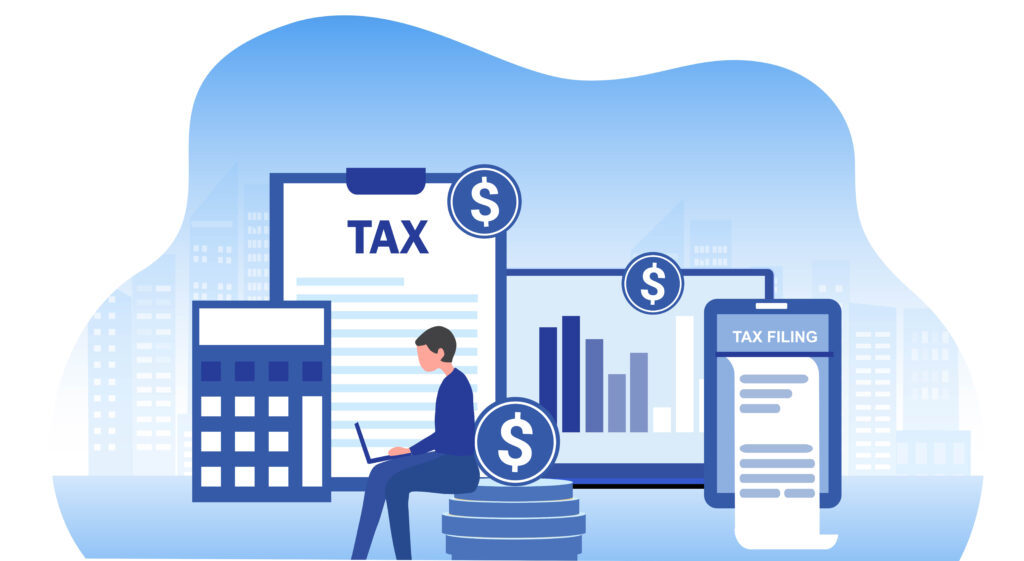The capital gains tax is a levy placed on the sale of investments. When you buy an investment, such as a stock or mutual fund, and then sell it at a later date for more than you paid, you are responsible for paying taxes on the difference. The tax rate can be as high as 23.8%, making it one of the most costly taxes for investors. However, there are ways to legally avoid paying this tax, and one of them is by investing with your Solo 401k.
What is a capital asset?
Almost anything you own and use for personal or investment purposes is a capital asset, according to the IRS. A home, a car, and investments in stocks or bonds are some examples. Property that is anticipated to provide value over an extended period of time is referred to as a capital asset. In general, any property possessed by a taxpayer, with the exception of inventory and accounts receivable, is considered a capital asset from a tax perspective.
What are the types of capital gains taxes?
Capital gains are divided by the calendar into two groups under federal tax law.

Selling a piece of property with a year or less of ownership results in short-term gains; selling a property with a year or more of ownership results in long-term gains. The maximum regular income tax rate, which is 37% in 2022, is applied to short-term gains. Whereas, under Obamacare, there may be an additional 3.8% tax on long-term gains in addition to the typical tax rates of 0%, 15%, or 20%.
The length of time you owned the asset in question will determine whether your capital gains transaction is subject to short-term or long-term capital gains taxes. The day you purchased the asset does not count toward the holding period; however, the day you sold it does. An example might be that you bought a piece of real estate on April 20, 2021. Your holding period would actually begin on April 21, 2021.
That means if you sold the house on April 19, 2022 – you’d still be in the first year of holdings the asset. If you sold in the first year holding term, you’d be subject to short-term gains or losses. However, if you sell the asset after the one-year holding period, you’d only be subject to long-term capital gains. Because short-term capital gains are taxed at ordinary income tax rates, some investors try to hold an asset for longer than one year. This way, when you liquidate the asset (after one-year), you’d only be subject to long-term capital gains at a lower tax rate.
How can capital gains taxes affect your investments?
The capital gains tax is designed to capture some of the compound growth earned on investments, such as stocks and bonds. When owning a long-term investment, any increase in the value of the investment while it was owned is termed a capital gain, and is subject to taxes. For example, if you buy a share of stock for $50 and then sell it for $75 a year later, you would be taxed on the $25 profit. Generally, investors are only liable for a specified rate of tax based on their total capital gains for the year.
Be aware that any losses you incur can be used to offset profits. This is known as harvesting tax losses and can help your overall tax rate to be reduced. Although the relationship between an investor and taxman can sometimes be adversarial, understanding how capital gains taxes work might actually help you make better decisions when it comes to investing.
When you understand how capital gains taxes work, you can be more strategic with your portfolio decisions to capture potential compound growth without getting slapped with unexpected taxes.
Short-term capital gains tax (levied when you hold an asset for less than 1 year) can be substantial. This ultimately reduces your net profit on the deal because of the tax. Weigh the pros and cons of waiting before cashing out on an investment, so you can capture more growth while still minimizing what you pay in taxes. This way, you can ensure that your hard-earned money goes further and achieves maximum returns in the future.
How can a Solo 401k help you avoid paying the capital gains tax on your investments?
A Solo 401k is a retirement savings plan specifically designed for self-employed people and small business owners. The Solo 401k offers considerable tax advantages, including the ability to grow investments tax-deferred. This can be extremely beneficial in avoiding the capital gains tax on stocks, bonds, mutual funds, and alternative assets.
The secret to avoiding capital gains tax when you invest via a Solo 401k is because of its setup as a retirement account. Rather than having to pay taxes every time an investment is sold or exchanged, with a Solo 401k those funds are invested for long-term growth within the retirement account structure and any investment gains are not fully realized until money is withdrawn from the plan.
As you continue to contribute to your Solo 401k and take withdrawals at retirement age, your investments will have had plenty of time to grow and mature tax deferred. Real estate investors love holding properties inside a Solo 401k – no 1031 exchange needed every time you sell a property! Similarly, crypto traders favor trading within a retirement plan because there are no capital gains when you exit a position (hopefully at a profit).
What are some of the best investments to make with a Solo 401k so you can avoid paying the capital gains tax?
When it comes to investing your Solo 401k funds, there are a variety of assets to choose from. One of the most popular and potentially lucrative investments is bitcoin. Since bitcoin does not involve any physical asset, buying and selling bitcoin with a Solo 401k can be done quickly and easily online via an exchange.
Another popular investment option is real estate, which presents the opportunity to generate both rental income and capital gains. Finally, stocks remain a solid choice when investing small amounts in a Solo 401k. While they come with more volatility than bitcoin or real estate investments, they offer the potential for high returns over time when done correctly. Ultimately, understanding the pros and cons of each potential investment is key to making smart decisions with a Solo 401k and successfully avoiding capital gains taxes.
Are there any other benefits to investing with a Solo 401k besides avoiding the capital gains tax?
Investing with a Solo 401k is a great way to save for retirement, and there are many valuable benefits associated with this type of account. One major benefit is the ability to contribute up to $61,000 per year. This amount can be divided between employer contributions and employee salary deferral contributions, allowing individuals to maximize their savings. Additionally, Solo 401k plans allow for highly customized investment options. And if you’re a small business owner who needs access to capital, you can take a loan from your Solo 401k plan. The 401k loan provides access to $50,000 or up to 50% of your account balance. Once you take the 401k loan, you can use the loan funds for any purpose.
Conclusion
The capital gains tax can have a big impact on your investments, but by investing with a Solo 401k, you can avoid paying this tax. There are some great ways to invest with a Solo 401k so you can keep more of your money.





